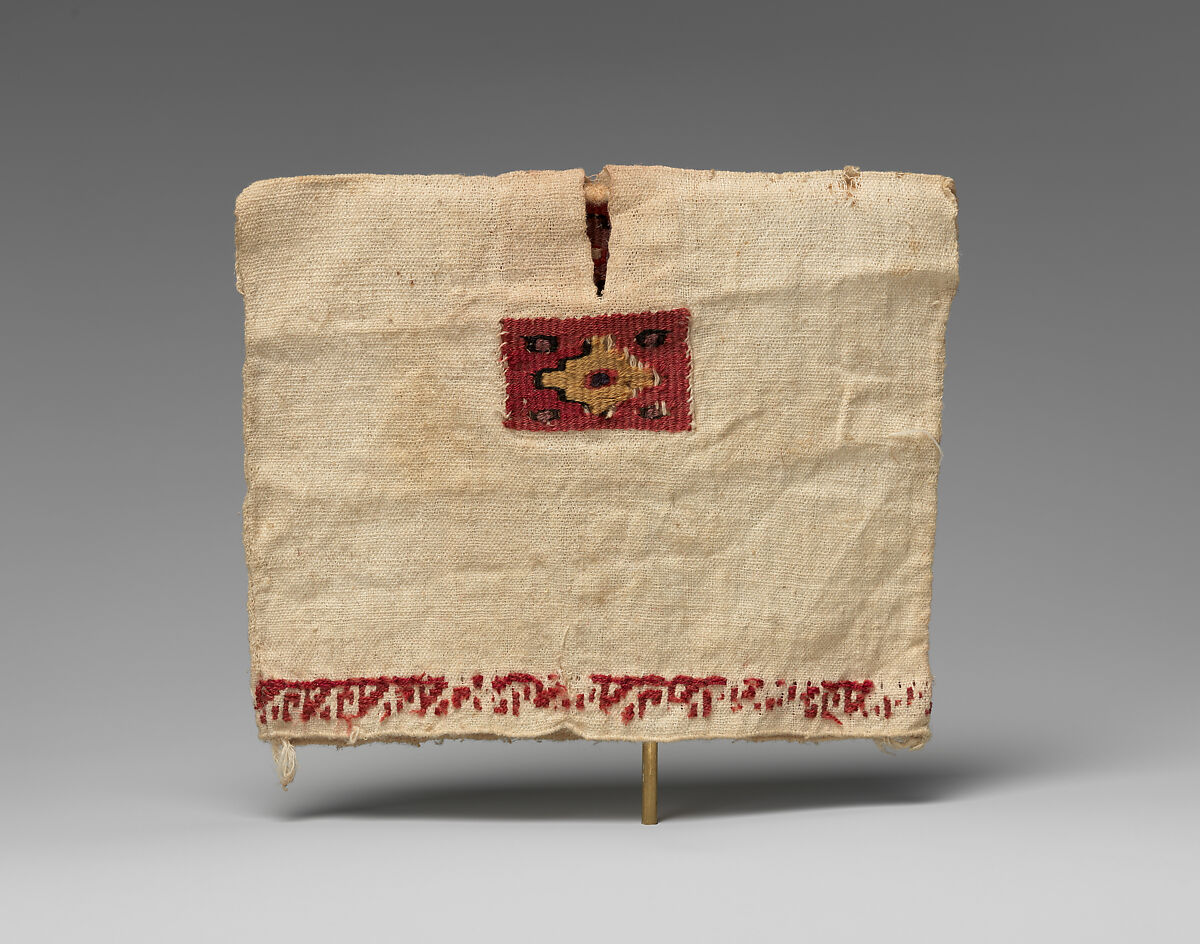Inca Miniature Tunic

Annotation
This cotton and camelid hair tunic dates from the 14th-16th century CE in Peru, and was simply constructed from a rectangle of fabric, with a slit for the neck and open sides for the arms. The is a red square/rectangular geometric design on the chest and red embroidery along the hem, similar to other Inca designs. This tunic measures 4.5 inches long, but it is unknown why it was created, whether for decor, for children’s toys, or for some other ritualistic reason. Weaving was an important art form for the Inca, for practical reasons. This tunic was woven from the same materials as other Inca textiles, such as bags or clothing. This tunic is a good example of standard materials and designs used in Inca weaving.
Credits
"Miniature Tunic," The Metropolitan Museum of Art, 14th-16th Century CE, https://www.metmuseum.org/art/collection/search/316939.